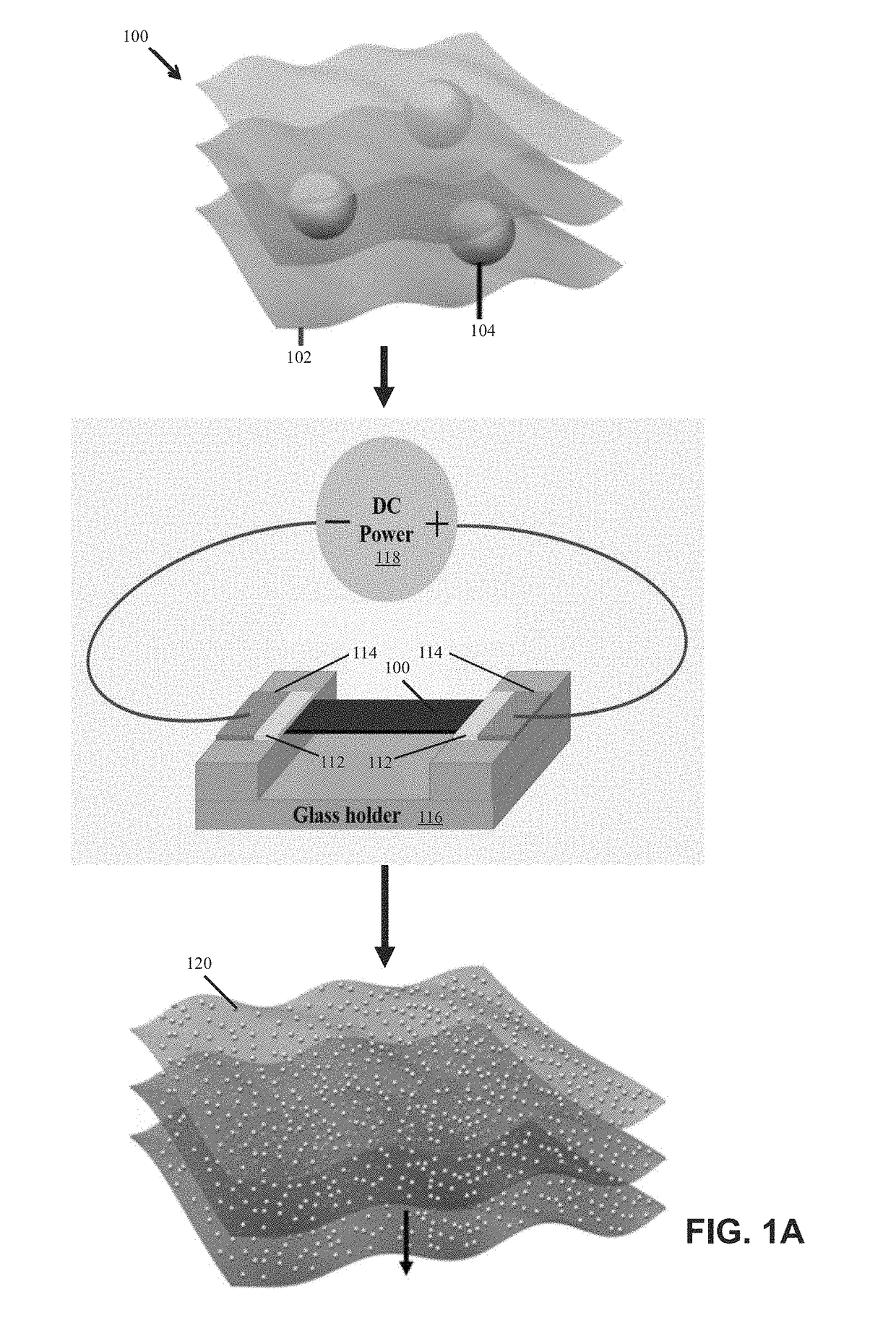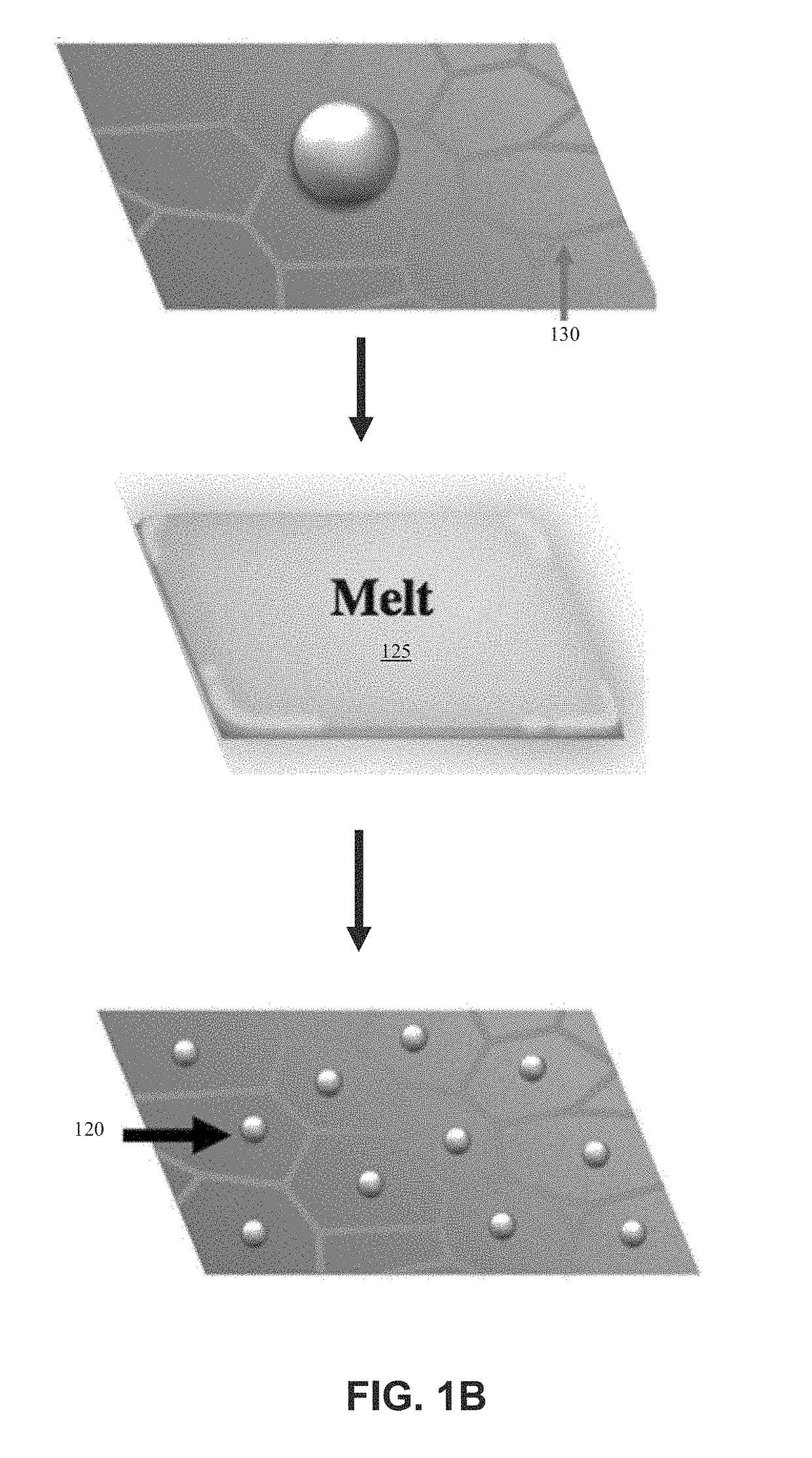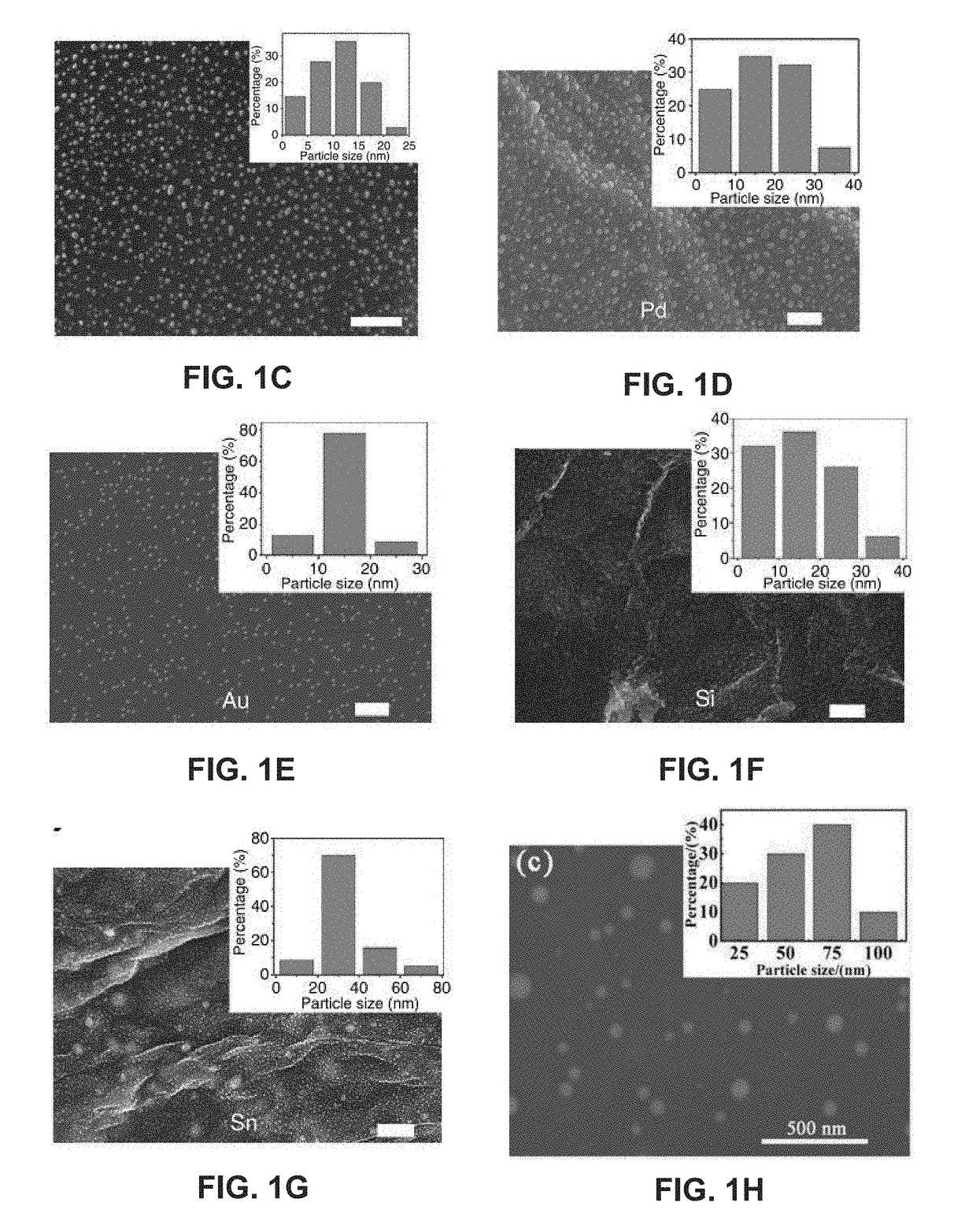Nanoparticles and systems and methods for synthesizing nanoparticles through thermal shock
a nanoparticle and thermal shock technology, applied in the field of nanoparticles, can solve the problems of radically changing the morphology of the end product, challenging to synthesize uniform small-size nanoparticles, and challenging to uniformly disperse nanoparticles on a substra
- Summary
- Abstract
- Description
- Claims
- Application Information
AI Technical Summary
Benefits of technology
Problems solved by technology
Method used
Image
Examples
Embodiment Construction
[0025]Embodiments of the systems and methods of synthesizing nanoparticles on substrates are described in detail with reference to the drawings, in which like or corresponding reference numerals designate identical or corresponding elements in each of the several views.
[0026]This disclosure relates to low cost, simple, ultra-fast synthesis of nanoparticles for nanocatalysis, which is beneficial for the development of high performance nanocatalysts used for energy conversion and electrochemical processes, such as water splitting, fuel cells, metal air batteries, and other catalytic reactions, such as biomass conversion, ammonia oxidation, and so on.
[0027]FIG. 1A illustrates an example method for constructing nanoparticles (e.g., metallic or semiconductor nanoparticles) on a substrate (e.g., reduced graphene oxide (RGO)) from micro-sized particles. The micro-sized particlesin the substrate are self-assembled into nanoparticles when heated by direct Joule heating. The micro-sized parti...
PUM
| Property | Measurement | Unit |
|---|---|---|
| Temperature | aaaaa | aaaaa |
| Temperature | aaaaa | aaaaa |
| Diameter | aaaaa | aaaaa |
Abstract
Description
Claims
Application Information
 Login to View More
Login to View More - R&D
- Intellectual Property
- Life Sciences
- Materials
- Tech Scout
- Unparalleled Data Quality
- Higher Quality Content
- 60% Fewer Hallucinations
Browse by: Latest US Patents, China's latest patents, Technical Efficacy Thesaurus, Application Domain, Technology Topic, Popular Technical Reports.
© 2025 PatSnap. All rights reserved.Legal|Privacy policy|Modern Slavery Act Transparency Statement|Sitemap|About US| Contact US: help@patsnap.com



